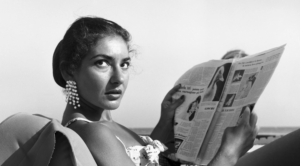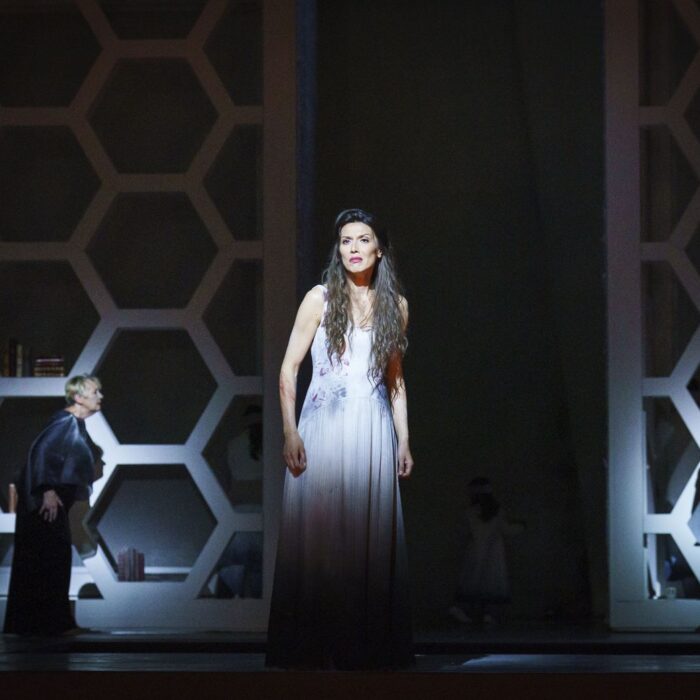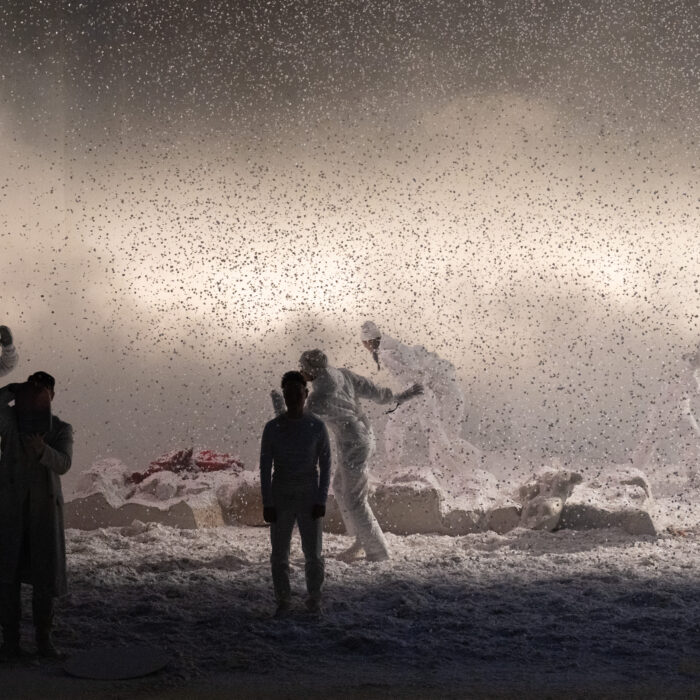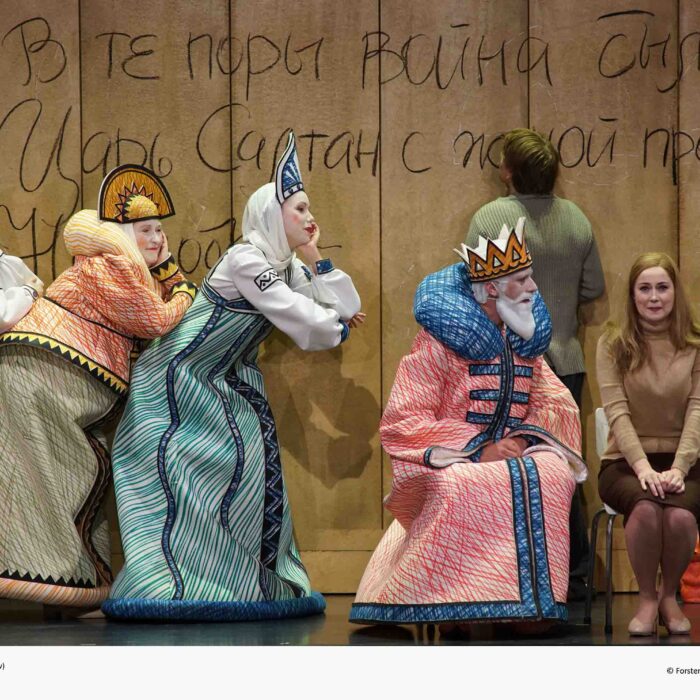
Opera Meets Film: The History of Maria Callas On Film
By John Vandevert(Photo Credit: Getty Images)
Maria Callas, better known as La Divina and the immortal muse of art, died on September 16, 1977, having lived a life that no-one else could have lived—or, better phrased, survived. Having sung in practically every major house in the world; recorded a enormous quantity of material from Verdi, Puccini, and Bellini, to Wagner, Spontini, Bizet, Rossini, and Donizetti; and amassed an immortal fanbase, La Divina shaped opera into an epic mode of superhuman expressiveness. Dissatisfied with simply performing, under La Divina opera became more than what happened on stage: it became a way of life. The Callas off the stage were just as operatic as the Callas on the stage, and one’s life became their art, their art becoming their life in turn. But, as the dedicated devotee will already know, this life comes with consequences. Callas’ life and its many peaks, troughs, and curves is enough to fill volumes of books: and indeed it has. Thus, anyone can now read about the life of La Divina for themselves.
From the iconic 1983 biography by Stelios Galatopoulos, the 2002 biography by Arianna Huffington, and the 2001 biography by Anne Edwards, to the more-recent additions like John DiGaetani’s 2021 biography and Sophia Lambton’s 2023 biography, it is not enough to say that Maria Callas changed opera forever. Instead, one must understand that she changed what we consider opera to begin with. La Divina showed us that not just anyone can call themselves an opera singer, nor is operatic singing simply about mastering the art of bel canto at the expense of everything else. Rather there are many skills necessary to produce true opera in its highest form.
One of her most notable comments on gesture in opera offers insight into who La Divina was as an artist. In conversation with George Lascelles in 1968, she made the seminal comment, “When one wants to find a gesture, when you want to find how to act onstage, all you have to do is listen to the music. The composer has already seen to that.” And, if one considers another comment by Italian opera conductor Antonino Votto, teacher of Riccardo Muti, it becomes clear that someone like Callas will never come again; “She was not just a singer, but a complete artist. It’s foolish to discuss her as a voice. She must be viewed totally—as a complex of music, drama, movement.” From stage plays to performance art pieces, Maria Callas’ legacy will never be forgotten: not now, nor ever, especially if her eternal fanbase has anything to say about it. Indeed, Facebook pages are dedicated to her!
To celebrate “Maria,” the new biofilm by Pablo Larraín, we will take a look through the many films and posthumous documentaries of Maria Callas. Although only participating in one film proper during her lifetime, La Divina has succeeded in becoming one of the most frequently-portrayed operatic singers in film since her death. From the first films in the 1970s and 1980s to the most recent, Callas’ cinematic legacy is one of many dimensions.
Callas On Screen (Before 1977)
The dramatic appearance of Callas onscreen gives some indication as to what she must have been like in person. Many of the younger generations, those born since her death in 1977, only know Callas through her recordings, videos, interviews, and immortalized likeness in paintings and sculpture. There were, however, two filmed projects created during her lifetime that proved to be influential chapters in her life, despite its dramatic ending.
The 1958 live video recording of her debut concert performance at the Théâtre National de l’Opéra de Paris has been recently brought to the fore by the controversial ‘hologram performance.’ In the original recording she sang one of the most iconic versions of Bizet’s ‘Habanera,’ from “Carmen.” Cloaked in her crimson shawl—a ferociously iconic look—with her hair up and cat eyes drawn sharp, each and every aria sung by Callas, including her equally iconic versions of Bellini’s ‘Casta Diva,’ from “Norma,” Rossini’s ‘Una Voce Poco Fa,’ from “Il barbiere di Siviglia,” and scenes from Verdi’s “Il Trovatore” and Puccini’s “Tosca,” makes the performance an irreplicable window into what it must have been like to experience Callas onstage. Recalling the performance, the official website notes that most, if not all, of Paris’ political elite clamored for a seat at this concert. Everyone from French President René Coty to actress Brigitte Bardot were in attendance the night that Callas commanded the world.
Despite being fired from the Met the same year, her career only grew exponentially after 1958. In 1965 she would give another iconic performance: the Zeffirelli performance of Puccini’s “Tosca” at the Royal Opera House in London. Commenting on Callas’ vocal decline after the mid-1950s, Joan Sutherland made a (generally accepted) observation, “I don’t think that anyone who heard Callas after 1955 really heard the Callas voice.” Renée Fleming theorised that she lost muscular support to her voice after her weight loss; no matter the cause, in the 1958 recording Callas is at her best. In this recording, all of La Divina is shown in glorious detail.
In her second, and final, film appearance, La Divina featured as the damned anti-heroine in Pier Paolo Pasolini’s 1969 film adaption of Euripides’ play “Medea.” This role was a part of her bel canto transition after her 1949 ‘“I puritani” performance. By this time in Callas’ career, she had retired from singing and removed herself largely from the eye of public scrutiny. She had sung her last stage role in 1965, and in 1968 had laid to rest pernicious rumors about a rivalry between herself and soprano Renata Tebaldi—a relationship sensationalized to the ire of both Callas and Tibaldi throughout their careers which was never as extreme as it was made out to be.
Yet, in Pasolini’s film, appearing alongside Massimo Girotti and Laurent Terzieff, and although the film itself did not achieve significant commercial success, Callas’ new cinematic chapter became one of immense importance. This appearance and her 1971 masterclasses at Julliard became catalysts for her attempted return to performance in 1974, culminating in her tragically canceled performance of “Tosca” in 1975—a cancellation likely brought about due to her diagnosis of dermatomyositis. Callas’ film career had a huge impact on her life, and in the years following her death her cinematic star would continue to rise. Had Callas lived, her cinematic career would have flourished.
Posthumous Callas (1977-2007)
The next 30 years would solidify Callas’ name in the annals of operatic history worldwide: from biographies, articles in dozens of languages, memorials, and videos, to interviews, unspoken remembrances, and tributes of every size and shape. Within the film world, there were many documentaries made that fixed La Divina in the minds of audiences ranging from those familiar with her art to those totally outside her world. In the 1980s her legacy was a contentious one. It was without a singular version and instead entirely dependent upon what and how one thought. In an iconic interview in 1982 between Opera News, Joan Sutherland, and conductor Richard Bonynge, the latter noted that Callas’ weight loss altered her robust dramatic voice, causing it to become thinner in size.
Ironically, it was the weight loss that helped her achieve international rapport outside of her talent. While Callas did not need to lose weight to become, as conductor Nicola Rescigno says, “possibly the most beautiful lady on the stage”—for she was already this to begin with—losing weight helped her gain an irrefutable presence onstage that stole the hearts of millions, though sacrificing a longer, healthier career. Nevertheless, despite the many health problems that plagued her, Callas succeeded in becoming immortal: so long as our planet remains.
The first documentary about Callas appears to have been Tony Palmer’s 1978 documentary, “Callas: A Documentary.” Palmer’s depiction of Callas was the first project to shed light on the harrowing elements of her life. The second posthumous film about La Divina was Alan Lewens and Alastair Mitchell’s 1987 film, “Maria Callas: Life and Art.” This was an archival documentary featuring interviews with those who knew and worked with her, as well as footage from performances and interviews with her where her sagacity is shown.
This format would become, more or less, the standard way to present Callas after her death, with a mixture of recorded statements and footage giving fuel for the imagination to embrace the enigma that was Maria Callas. In 1988 another documentary was released entitled “Maria Callas: La Divina – A Portrait,” made for ITV and once again directed by Palmer. The opening line of the film, “It has been ten years since Maria Callas died,” is a sobering reminder that to those like Palmer, Callas’ death was not something distant and historical but very much real. The legend, the divine, had succumb to nature’s law just like the rest of us, and in living memory.
It can be said that by 1988, audiences who had known Callas now knew Callas in a far deeper way than ever before. Since her death they had become intimately familiar with the many facets of her identity. From 1988 to 2002, a break in Callas-centric filmmaking occurred, but interest reignited thanks to Zeffirelli’s 2002 biofiction, “Callas Forever.” This was the last film made before his death in 2009, and a love-letter to La Divina, whom he had worked with in her last stage performance of “Tosca” at the Royal Opera House in London in 1965. It was this performance where people by the dozens and dozens had lined up outside to get their hands on tickets.
In 2004 another television documentary was made, “Maria Callas: Living and Dying for Art and Love” by Steve Cole, which followed her 1965 performance of “Tosca.” It must be remembered that in 2007, Callas was posthumously awarded the Grammy Lifetime Achievement Award, and in that same year, French film director Phillipe Kohly released the documentary “Callas assoluta.” This film marked the end of the second chapter of Callas’ cinematic legacy, one that would resume 10 years later. However, this was no hiatus for La Divina and her legacy. In 2012 Callas was inducted into the Gramophone Hall of Fame, while the 2014 “Maria Callas Remastered Edition” by Warner Classics gave fans additional fuel to the fire of their undying love for Maria Callas, La Divina.
Continuing A Legacy (2017-2024)
Following a 10 year pause, the world’s obsession with Callas would reignite. It is within this wave that we find ourselves today. In 2017, two books were released about La Divina, namely film director Tom Volf’s biographies, “Maria by Callas” and “Callas Confidential.” It is the former that successfully launched the ‘third wave’ of Callas’ cinematic legacy. The now iconic 2017 documentary “Maria by Callas,” based upon the eponymous book, portrayed La Divina in a new light. In this film Callas is given the chance to speak on her own behalf. We are told the narrative of who she was as a woman and as an artist from her perspective, not ours. With colorized and restored footage, particularly the notable footage of audiences lining up outside to get tickets to her final performance of “Tosca” at the Royal Opera House, the importance of “Maria by Callas” cannot be stated enough. It set a new standard for the onscreen depiction of Callas. As La Divina says in the film, “I have to feel what I do.”
This film gives us the chance to understand Callas not as a goddess but a human being attempting to live up to the difficult image her audience had built for her. After this, a surge in interest in Callas began, resulting in the strange hologram tour by BASE Hologram Productions titled “Callas in Concert.” Here audiences were treated to a simulacrum of Callas’ 1958 Paris debut performance. It was received poorly, being considered an unnerving attempt at reversing the painful reality that Maria Callas was, in fact, dead and never coming back to us, no matter how much her audience wanted her to. After this fiasco, in 2019 Volf published a third book about La Divina: “Maria Callas: Lettres & Mémoires (Maria Callas: Letters & Memoirs).” Once again Callas was given a chance to speak on her own behalf through essays written by her throughout her life. Thus, Callas now speaks for herself.
This new era of cinematic work concerning Callas can be defined as one where Callas has become the narrator of her own story, rather than having others step in the way and tell it for her. The veil of greatness has been drawn back, revealing the woman behind La Divina. Here is a woman who is hurting, grieving, struggling, and surviving but whose difficulties only sometimes reach the ears of her adoring followers. Now, at last, we are able to see La Divina for who she actually was. In 2022 Tony Palmer’s 1988 documentary was uploaded to YouTube under the abbreviated title, “Callas.” The stage play adaptation of Volf’s book “Maria Callas’ Letters and Memoirs” became a success thanks to the participation of Monica Bellucci in its 2019 Parisian premiere.
Between 2019 and 2023—the latter being the year that Volf’s book was made into film—events were created in Callas’ name and a statue of her, made by sculptor Aphrodite Liti, was unveiled in Athens. The latter was castigated on social media for what was widely considered to be its distasteful depiction of La Divina. It cannot be denied that the statue looks nothing like Callas but, nevertheless, it remains standing to this day in the land of her ancestors. Volf’s film was a part of the continued, gradual expansion of high-profile interest in the cinematic aspects of Callas’ life. In 2024 two films have opened fresh chapters in the Callas cinematic world. While the Pablo Lorrian film, “Maria,” is more well-known given its recent premiere, a Greek version called “Maria Callas” also debuted this year. This was made by the Greek director Antonis Karagiannis with the role performed by Mae George. The legacy of Callas in film, memory, art, and in the minds of fans, will never die. She achieved the impossible: immortality.
Though her body is not here, her presence is, and she will never be forgotten. As a fan of Callas through her many videos and recordings, I cannot help but sometimes feel as if Maria Callas was someone who never really existed: but she did. She was real. A woman of epic proportions, and we are honored to love her, forever and ever.


